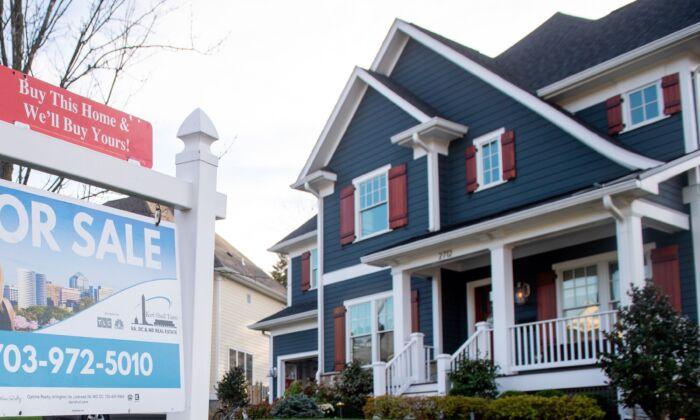It has not been a great year for Wall Street and the economy. In an effort to combat rampant inflation, the Federal Reserve (Fed) raised interest rates in early May. In June, the Fed increased interest rates once again, by 75 basis points, marking the largest increase in a single meeting since the early 1990s.
Moreover, it is highly unlikely that rates will go down in the near future. Goldman Sachs analysts predict that the Fed will raise rates
seven times in 2022, with some sources forecasting that they could reach as high as 2.9 percent in early 2023. Starting this month, Fed officials are also planning to shrink its nearly
$9 trillion asset portfolio, a policy move widely expected to exacerbate borrowing costs further.
All of the complexities above paint a daunting picture for individuals planning to buy a house soon. If you are set on navigating this tumultuous environment, here are a few things you should consider.
The Fed’s Relation to Mortgage Rates
The prices of homes are guided by many intricate factors, including interest rates. Due to its complex nature, it can be hard to predict how the Fed’s recent activity will affect the housing market. However, for potential buyers, the immediate concern these higher rates present is higher monthly payments.The Fed does not set mortgage rates, nor does it influence them as directly as it does other products. However, the Fed does set the prevailing tone for mortgage rates. Both lenders and investors watch the Fed like a hawk, and subsequent attempts by the mortgage market to decipher the Fed’s actions do affect how much buyers will pay for a loan. This past rate hike was the third of a potential seven this year. These increases tend to lower purchase affordability, making the process even more challenging for low-income and first-time home buyers.
Following historically low rates in 2020 and 2021, mortgage rates started climbing aggressively in January, when they started at around 3 percent. By February, the 30-year average surpassed 4 percent and climbed past 5 percent in April. According to the Mortgage Bankers Association, the turbulent start to the year decimated mortgage applications, which fell to a
22-year low.
In June, mortgage rates climbed past 6 percent. Buyers have not seen mortgage rates rise above 6 percent since 2008. The historic hike in rates in such a short time has greatly diminished the buying power of consumers, and there is no sign that the volatility will even out any time soon.
How High-Interest Rates Affect the Market
Interest rates determine the cost of a mortgage and heavily influence the value of real estate. In a market with low-interest rates, there tends to be an increase in demand for property, which subsequently drives up prices. The opposite effect is generally observed in a market with high-interest rates. This affects sellers as well as buyers, since they can experience a strong decline in demand for their properties.Prospective buyers searching for a home may experience a tale of two extremes if they were in the market in both 2021 and 2022. As a result of low-interest rates in 2020 and 2021, home prices
rose by 18.8 percent in 2021, according to the S&P CoreLogic Case-Shiller U.S. National Home Price Index. This was the largest increase in 34 years of data and surpassed the 10.4 percent gain in 2020.
However, as mortgage rates cruise past 6 percent and impair the affordability for the average consumer, the result will likely put downward pressure on house prices. As affordability becomes scarcer, many prospective buyers will be forced out of the market. As rising mortgage rates force out buyers, competition for homes will be reduced, and sellers will presumably be forced to accept lower offers.
Will Housing Prices Actually Go Down?
While the correlation between interest and mortgage rates affects the cost of buying a home, that doesn’t mean the future cost of buying a home is so clear. Many factors affect the market, and the volatility has not shown any signs of slowing down.Most experts have forecast
higher home prices through 2022, citing an imbalance in the supply and demand of the housing market as the main culprit. Fannie Mae also anticipates that home price growth will continue to climb up to
10.8% by the end of 2022, though it predicts prices will cool down in 2023.
Is It the Right Time for You to Buy?
With home prices showing no signs of decreasing, and experts predicting that they won’t fall dramatically, should you buy a home?
Though the market may not be ideal for buyers, there are no signs that demand will go down any time soon. It will likely remain healthy, with nearly 5 million millennials turning 30 over the next couple of years. This coming of age for many millennials, coupled with
calculations from Realtor.com indicating we are short 5.8 million single-family homes, point to both demand and prices continuing to flourish.
Though it’s currently a seller’s market, buyers with time on their sides may see a pleasant shift over the next year or so. With higher mortgage rates lowering affordability and housing demand, there will almost certainly be a markdown in the rampant price growth experienced this year. Though this won’t necessarily decrease prices, putting a damper on such fierce growth will help the pendulum swing back in favor of buyers.
The Epoch Times Copyright © 2022 The views and opinions expressed are only those of the authors. They are meant for general informational purposes only and should not be construed or interpreted as a recommendation or solicitation. The Epoch Times does not provide investment, tax, legal, financial planning, estate planning, or any other personal finance advice. The Epoch Times holds no liability for the accuracy or timeliness of the information provided.






Friends Read Free